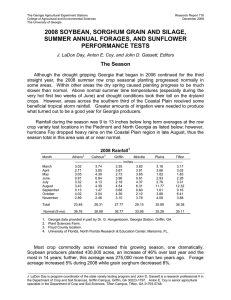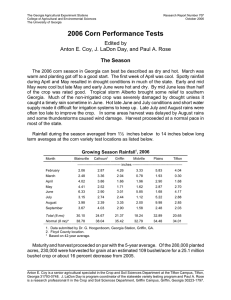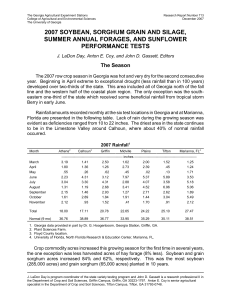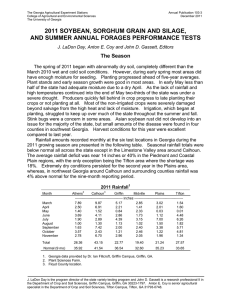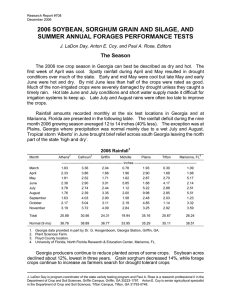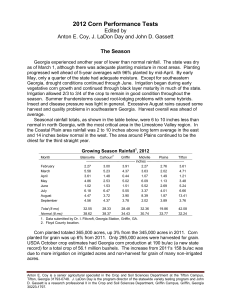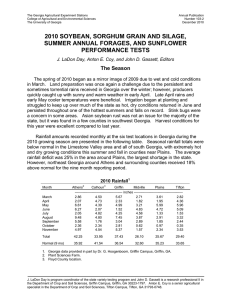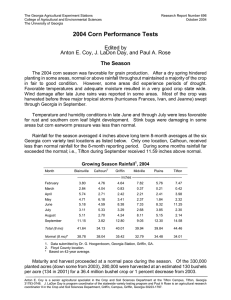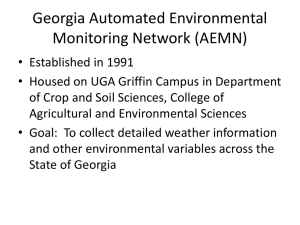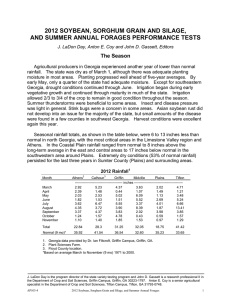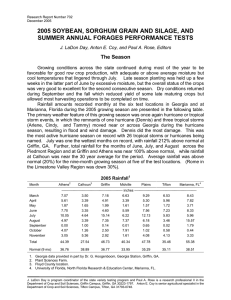Document 11093307
advertisement
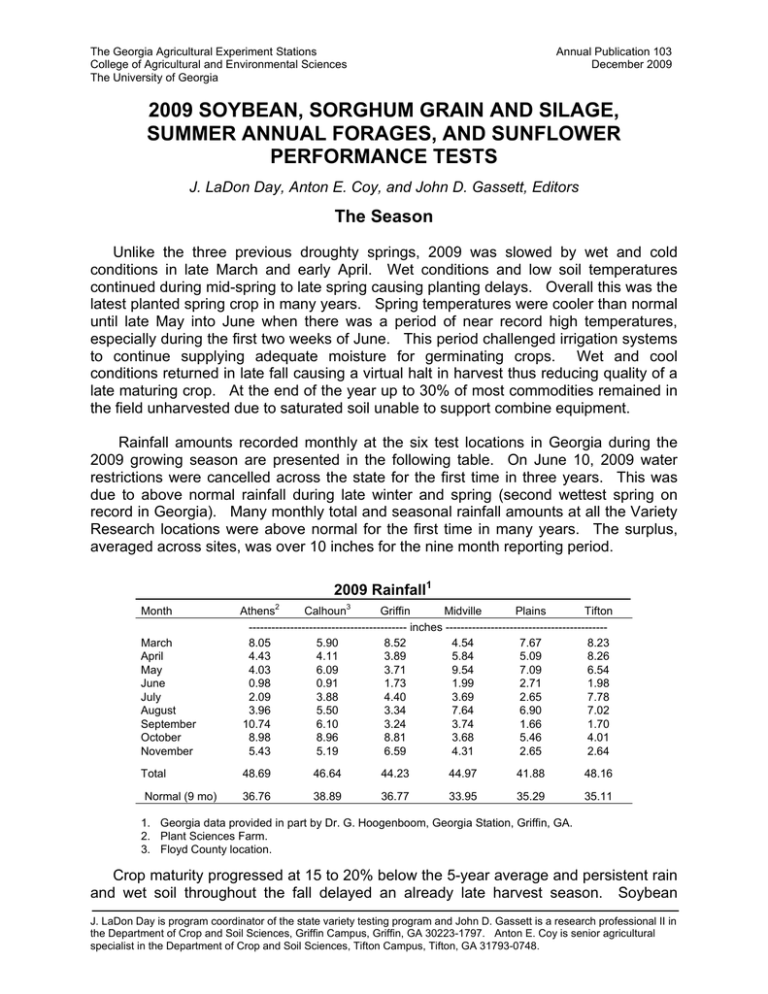
The Georgia Agricultural Experiment Stations College of Agricultural and Environmental Sciences The University of Georgia Annual Publication 103 December 2009 2009 SOYBEAN, SORGHUM GRAIN AND SILAGE, SUMMER ANNUAL FORAGES, AND SUNFLOWER PERFORMANCE TESTS J. LaDon Day, Anton E. Coy, and John D. Gassett, Editors The Season Unlike the three previous droughty springs, 2009 was slowed by wet and cold conditions in late March and early April. Wet conditions and low soil temperatures continued during mid-spring to late spring causing planting delays. Overall this was the latest planted spring crop in many years. Spring temperatures were cooler than normal until late May into June when there was a period of near record high temperatures, especially during the first two weeks of June. This period challenged irrigation systems to continue supplying adequate moisture for germinating crops. Wet and cool conditions returned in late fall causing a virtual halt in harvest thus reducing quality of a late maturing crop. At the end of the year up to 30% of most commodities remained in the field unharvested due to saturated soil unable to support combine equipment. Rainfall amounts recorded monthly at the six test locations in Georgia during the 2009 growing season are presented in the following table. On June 10, 2009 water restrictions were cancelled across the state for the first time in three years. This was due to above normal rainfall during late winter and spring (second wettest spring on record in Georgia). Many monthly total and seasonal rainfall amounts at all the Variety Research locations were above normal for the first time in many years. The surplus, averaged across sites, was over 10 inches for the nine month reporting period. 2009 Rainfall1 March April May June July August September October November Athens2 Calhoun3 Griffin Midville Plains Tifton ------------------------------------------ inches ------------------------------------------8.05 5.90 8.52 4.54 7.67 8.23 4.43 4.11 3.89 5.84 5.09 8.26 4.03 6.09 3.71 9.54 7.09 6.54 0.98 0.91 1.73 1.99 2.71 1.98 2.09 3.88 4.40 3.69 2.65 7.78 3.96 5.50 3.34 7.64 6.90 7.02 10.74 6.10 3.24 3.74 1.66 1.70 8.98 8.96 8.81 3.68 5.46 4.01 5.43 5.19 6.59 4.31 2.65 2.64 Total 48.69 46.64 44.23 44.97 41.88 48.16 36.76 38.89 36.77 33.95 35.29 35.11 Month Normal (9 mo) 1. Georgia data provided in part by Dr. G. Hoogenboom, Georgia Station, Griffin, GA. 2. Plant Sciences Farm. 3. Floyd County location. Crop maturity progressed at 15 to 20% below the 5-year average and persistent rain and wet soil throughout the fall delayed an already late harvest season. Soybean J. LaDon Day is program coordinator of the state variety testing program and John D. Gassett is a research professional II in the Department of Crop and Soil Sciences, Griffin Campus, Griffin, GA 30223-1797. Anton E. Coy is senior agricultural specialist in the Department of Crop and Soil Sciences, Tifton Campus, Tifton, GA 31793-0748. producers increased acreage 10% above last year, which was 60% greater than two years ago. State yield per acre of 33 bushels for soybeans matched the 2003 record and production was almost 15 million bushels, the most produced in the state since 1994. Grain sorghum planting remained the same at 55 thousand acres. Sorghum silage harvest held steady but yields of 14 tons/acre pushed production up 17%. All other forage production was up 25% more than last year. Although commodities’ prices remain higher than long term average, high production costs continue to reduce profit margins due mainly to high energy prices. Soybean rust was again found in Georgia this growing season, but as in 2008 did not spread into a limiting factor. Apparently due to an increase in spraying fungicide coupled with the hot weather conditions, rust did not develop into a major problem. The threat remains very serious to soybean production in Georgia due mainly to the ease at which this rust overwinters in deep south Georgia and in North Florida.
